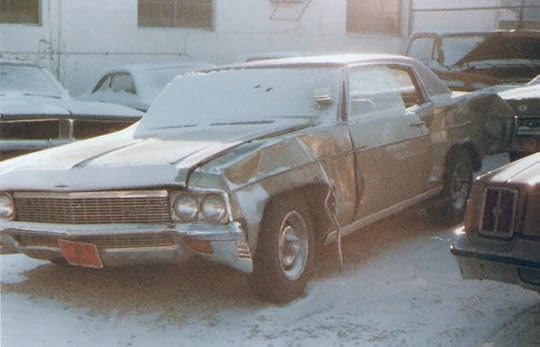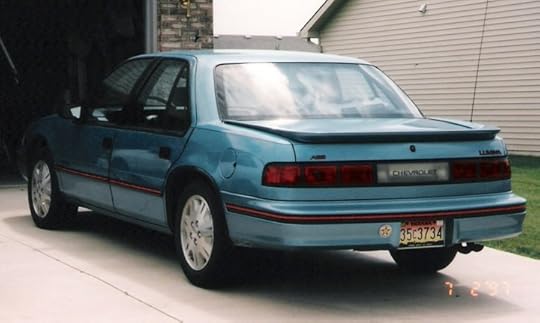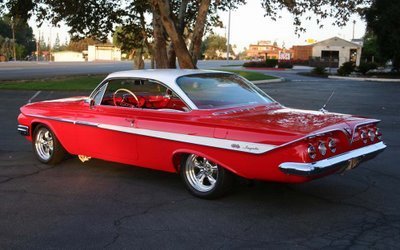I crashed my first car 35 years ago this week, totaling it and my boss' son's car at the same time. If that wasn't bad enough, the police officer at the scene told my dad I'd been traveling at least 65 mph on the city street, which could have been an underestimate. I guess I was lucky in that I wasn't injured and I didn't hit the house, although it was so close that I couldn't fit my finger between my bumper and the garage. A few years after the accident I became a coworker of the same officer and learned that he was not an accident reconstructionist, which means my original claim that the accident was caused by mechanical failure is still a possibility.

(1970 Chevrolet Impala)
That first car of mine was the green 1970 Chevrolet Impala Custom Coupe pictured above. It was eight years old at the time of the crash and had about 90,000 miles on the odometer. It also had rust holes in the front fenders right behind the wheel wells. I'd owned it for about six months. It would seem that a car of that age and mileage should be able to survive my slamming on the brakes when a car got between me and my friend, whom I was trying to catch. But, instead, the A-frame broke leaving me unable to steer as it slid off the street and onto my boss' property and into his son's car. The shiny one he spent hours washing, waxing and vacuuming.

(1992 Chevrolet Lumina)
In those days, 100,000 miles was considered to be about the end of an automobile's life. The quality of cars made a few years later, in the late 1970s and early 1980s, was even worse as automobile manufacturers struggled to meet government fuel economy guidelines. But, cars made since the 1980s routinely last into the 120,000 mile range. Three of my cars lasted beyond 130,000 miles, including the 1992 Chevrolet Lumina pictured above that I sold at 177,000.
The cars of today are not only made to last longer, they are more powerful and more fuel efficient, too. For example, my first Corvette, a 1977 model, produced only 165 hp. Compare that to my mini-van, a 2007 Dodge Caravan, which is rated at 215. I think my first Impala used a gallon of gasoline every 10 or 15 miles as opposed to my current Impala (I've had four), which is 38 years newer and averages about 22 mpg, even with its more powerful V8 engine. I just wish the newer cars had more style, such as the 1961 Impala seen below. Even "retro" models like the new Mustangs, Camaros and Challengers lack the style of the 1960s.

(1961 Chevrolet Impala)
But, even with all these improvements, I am suspicious of the giant automobile companies in that I believe the cars can be made of even higher quality. Automobile companies certainly profit when we must replace our cars, but they also profit from repairs and replacement parts thus reducing their incentive to improve their product. Our only hope is in their adversary; competition.
 newest »
newest »
 newest »
newest »
 65 on a city street??? shame on you....
65 on a city street??? shame on you....

 (1970 Chevrolet Impala)
(1970 Chevrolet Impala) (1992 Chevrolet Lumina)
(1992 Chevrolet Lumina) (1961 Chevrolet Impala)
(1961 Chevrolet Impala)

